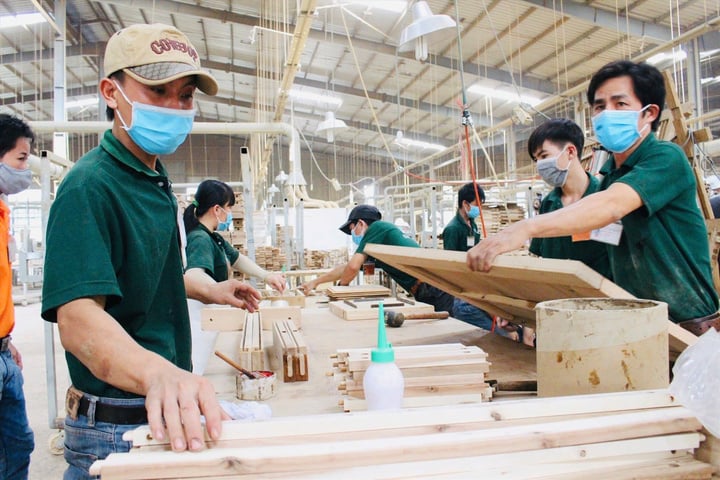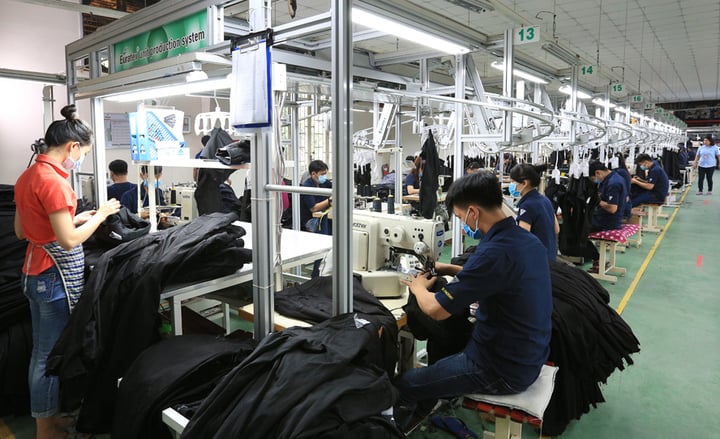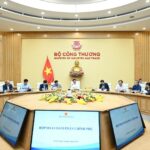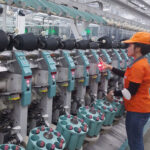At the seminar US Countervailing Duties: Preparations for Vietnamese Enterprises, organized by the Ho Chi Minh City Center for Trade and Investment Promotion and the US-Vietnam Business Council on May 9, Ms. Jennifer Diaz, International Trade Lawyer at Diaz Trade Law, shared that Vietnamese businesses need to understand the tariffs applied to each industry and product category. She emphasized the importance of staying updated with any changes in tax rates and enforcement measures implemented by the US, as well as being aware of what actions to avoid during this time.
Opportunities for Goods of Vietnamese Origin
According to Ms. Diaz, there are several key considerations. Firstly, ensuring the safety of goods entering the US market is crucial. US Customs and Border Protection is currently scrutinizing imported goods, particularly verifying their country of origin and true value, beyond just relying on the presented documents.

Being truthful about product origins is crucial for Vietnamese businesses exporting to the US. (Photo: H. Linh)
The US also employs various trade tools to examine the origin and value of imported goods. For goods from Vietnam, US Customs has certain standards for inspection and control. Therefore, Vietnamese businesses must first tightly control the quality, origin, and raw materials of their products before shipping them out of Vietnamese ports.
“Vietnamese origin definitely has more advantages. However, we need to understand the regulations and stay updated. Enterprises must also recalculate their supply chains and manage production reasonably,” Ms. Diaz advised.
“Payment terms and methods are also particularly important and must be negotiated carefully. When negotiating with buyers, pay attention to whether the seller or the buyer bears the tax. If Vietnamese enterprises bear the tax, they must calculate to avoid losses,” she added.
Amidst constant fluctuations, Vietnamese businesses need to have multiple plans and strategies for their exports, adopting a flexible approach rather than solely relying on traditional methods.
According to the expert, there are several things that Vietnamese businesses should refrain from doing at this time. Firstly, avoid using two invoices for one order; do not change the origin of goods or reduce their value.
Opening an office in the US and importing one’s own goods is also not a suitable solution, as it will create more challenges for the business. The US is currently scrutinizing virtual offices closely.
Sending goods to the US through a partner is another approach to avoid, as it may result in the application of a special tax.
“However, Vietnamese businesses should not be pessimistic. In fact, goods of Vietnamese origin already have opportunities. Enterprises just need to maximize the opportunity to process and manufacture ‘made in Vietnam’ products. For example, if you import sugar, flour, and eggs from other countries to produce cakes in Vietnam, and you mix all these ingredients to make the final cake product, then that cake is of Vietnamese origin, and the import tax applied will be that for goods from Vietnam,” Ms. Diaz explained.
Effective Strategies for Bringing Vietnamese Products to the US
Dr. Son Tran, Professor of Business at SUNY Cobleskill and Business Development Advisor of the US-Vietnam Business Council, shared that US tax policies have shifted from prioritizing free trade to strategic trade, focusing on industry and national security. This creates both opportunities and challenges for countries.

The garment industry is facing potential tariffs of 10-30% and must comply with strict labeling regulations. (Photo: Vietthang jean)
Vietnam is considered an attractive destination in the “China +1” strategy, but it also faces close scrutiny from the US on issues such as transshipment, anti-dumping, labor standards, labeling, and rules of origin.
Dr. Tran affirmed that US tariffs will persist, requiring businesses to take a proactive and strategic approach. Agility, trust, and innovation are key factors for success.
To effectively cope with these challenges, Vietnamese businesses should consider three main strategic directions. First is strict compliance with regulations, including strengthening supply chain documentation, ensuring transparent origin labeling, and early adoption of US and EU standards.
Second is upgrading the value chain, transforming strongly from an original equipment manufacturer (OEM) model to an original brand manufacturer (OBM), investing in brand building, innovation, and owning the customer base.
Third is increasing engagement and proactively working with trade associations and policymakers, participating in policy discussions, and demonstrating Vietnam’s reliability as a trade partner.
In parallel, Vietnam needs to develop a strong national and industry branding strategy. This is crucial as the current context of tariffs and international supervision demands higher levels of trust and traceability.
“The branding strategy needs to shift from a low-cost manufacturer to a reliable alternative supplier, capable of providing unique, high-value specialty items such as handicrafts, agricultural and aquatic products,” Dr. Tran suggested.
“At the industry level, collective branding should be built on core values such as quality, sustainability, compliance, and trust,” he added.
Meanwhile, Mr. Mohammed Selia, CEO of FulfillPlus, shared that as Vietnamese businesses seek to unlock the US market, it is essential to understand import taxes, which are paid upon clearance at the port of entry and determined based on the HTS code, declared value, and origin of the goods. Notably, Vietnam does not currently have an FTA with the US.
He emphasized that for specific industries, businesses must prepare meticulously.
For clothing and apparel, there is a potential tariff rate of 10-30%, and strict compliance with the Federal Trade Commission’s (FTC) labeling regulations is mandatory, along with accurate product classification to avoid unnecessary delays.

Vietnam needs to develop a strong national and industry branding strategy. (Photo: H. Linh)
For the furniture industry, especially wood products, attention must be paid to the risk of anti-dumping duties, and compliance with the Lacey Act is essential; some states like California have additional requirements for flame retardants.
For agricultural and aquatic products, registration with FDA/USDA and pre-import declaration are mandatory, and in many cases, cold chain storage must be ensured throughout the supply chain.
Footwear often faces high tariff rates, sometimes over 30%, with classification based on materials and design, necessitating careful preparation of documentation.
On the other hand, handicrafts often benefit from low or no tariffs, but the use of prohibited animal-derived materials must be avoided. This category is well-suited for platforms like Etsy, Amazon Handmade, and direct-to-consumer channels.
Mr. Selia also advised importers to be aware of the De Minimis Rule – Section 321, which allows for the import of goods with a value of $800 or less without paying duties.
To achieve sustainable success in the US market, Mr. Mohammed Selia emphasized the importance of maintaining local inventory for faster delivery and enhanced customer satisfaction.
In parallel, focusing on product quality, investing in brand building, and creating attractive packaging designs are indispensable elements.
Unlocking Solutions: Navigating Trade Tax Challenges with Industry Leaders
The Minister of Industry and Trade acknowledged the concerns, challenges, and suggestions raised by industry associations and businesses during the conference. He also outlined potential solutions and negotiation strategies to address these issues.
Unlocking Trade Potential Along the Asia-Pacific Corridor: Vietnam’s Entry into the CPTPP
With the United Kingdom’s accession, the Comprehensive and Progressive Agreement for Trans-Pacific Partnership (CPTPP) has officially reached 12 members, accounting for approximately 15% of global GDP. This marks a turning point in international trade relations, offering extensive cooperation opportunities for member economies, including Vietnam.
The Export Edge: How Domestic Enterprises are Leading Southeast Asia’s Growth
As of late, the remarkable resilience and breakthrough growth of the domestic business sector have been the shining stars of our country’s export landscape.





















